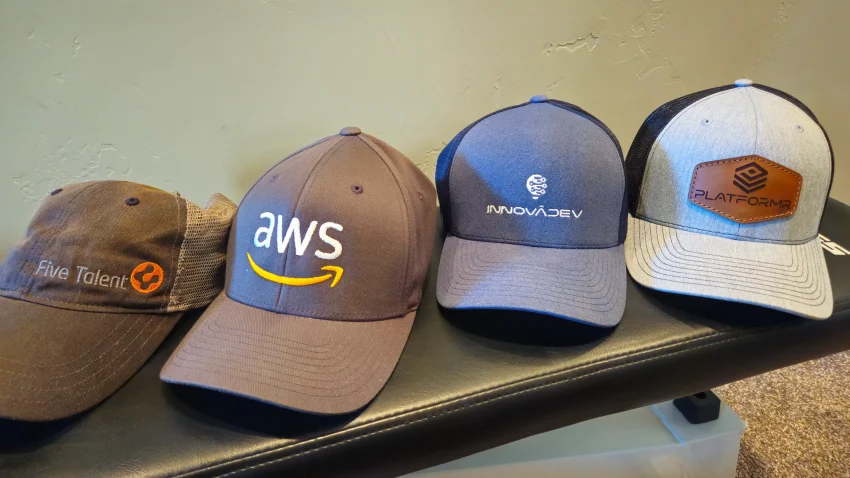I like to use the analogy of owning and running a company and the similarities it has with playing poker. When I play poker, I like to know my percentages for winning, weigh my risks, be bold when needed, and read the room. To be a successful company, you need to identify and understand the opportunities, weigh the risks, be bold at times, and understand the market and competition. The main difference between playing poker and leading a company is that you can surround yourself with active advisors, subject matter experts and a community of supporters at a company. I think I would be kicked out of my poker games if I tried to get advisors, SMEs and help during a game! Though I’ve certainly considered wearing a tiny earpiece connected to a probability AI agent—just kidding… mostly.
Why I’m Changing Hats
So, why am I changing hats this month? This month, I am excited to put on the hat of CEO for my new company! I’ve been a CTO for 16 years and before that I was a software engineer for 10+ years. My mind naturally works like an engineer so this new role will bring new challenges, problems and a new way of thinking.
One example of the new challenges I’ll encounter will be the fact that I have always struggled looking at the big picture and sometimes get lost in the details. It’s like I’m trying to count cards while missing the fact that everyone else at the table just folded! To focus on this, I will be intentionally blocking time out on my calendar to take a step back and focus on the big goals, problems and actions. If you catch me debugging code instead of reviewing our quarterly strategy, feel free to spray me with a water bottle like a misbehaving cat.
My CEO Approach
Here is how I am trying to structure my time focusing on the bigger picture:
1) Clarity
- I want to constantly be reviewing and communicating my Vision, Mission, and strategy
- I want to consistently work on clarifying these messages until I sleep, eat and breathe these thoughts. Focusing on the bigger picture like this reminds me of my personal purpose in life and the scripture that helps me keep that front and center: Proverbs 3: 5-6.
- I’ve started explaining my mission statement to my kids during dinner conversations. My family thinks I’ve lost it, but at least I’ll never forget what company I’m running!
- Self-evaluation metrics: I’ll assess myself monthly by asking: Can every team member clearly articulate our vision in their own words? If I wake them up at 3 AM (which I do often thinking about things slipping through the cracks), could they explain our mission? If not, I’ve failed at clarity.
2) Cohesion
- Whenever I take the enneagram test, I always result in a personality type of 1. This personality always finds more efficient, perfect ways of doing life. So I naturally don’t think cohesion will be a struggle for me, but I will need to balance this characteristic with tolerance, patience and the ability to let others learn the way they learn.
- Goals include establishing clear interdepartmental workflows and communication channels.
- Defining clear roles and responsibilities within my team so everyone understands our expectations.
- If I start organizing the office supplies by color and efficiency rating, please stage an intervention. My “perfect system” might be someone else’s nightmare.
- Self-evaluation metrics: Success means creating systems that connect our teams rather than silos that divide them. I’ll evaluate myself by tracking cross-department collaborations and asking team members if they understand how their work connects to other departments.
3) Culture
- Making sure I have a win (employee), win (company) and win (customer) scenario always at the top of my mind
- Making sure I know that I have hired the best and lean on them to drive in their area of expertise and support them to the best of my abilities
- I promise to only make engineering puns on alternating Tuesdays. The rest of the time, I’ll use my CEO voice, which is exactly the same but with 20% more hand gestures.
- Self-evaluation metrics: I’ll measure my culture-building success through employee satisfaction surveys, retention rates, and by counting how many times people actually laugh at my dad jokes in meetings.
From Execution to Strategy
The transition from CTO to CEO isn’t so different after all. In poker, I’ve learned when to fold a bad hand; as CEO, I’ll need to know when to pivot from a failing strategy. In both arenas, you need to know when to go all-in on a good opportunity.
The biggest difference? As CEO, I can’t hide behind sunglasses when I’m nervous about a big decision. I will be leaning on my team of employees, advisors, board members and partners to make sure I am playing the best hand. Occasionally I might be bluffing or get impostor syndrome, but that’s not a bad thing either.
I’ll evaluate my overall CEO performance by one simple metric: Am I building something that continues to excite me as much as a winning hand? If not, it’s time to reshuffle the deck and deal again.
Oh, and in case you don’t understand my reference to changing hats… hats are kind of my thing. It’s how most people recognize me and how I standout. I will be the only CEO wearing a baseball cap at an executive dinner or presentation… and no, I’m not going to stop doing that just because I have a different title.
